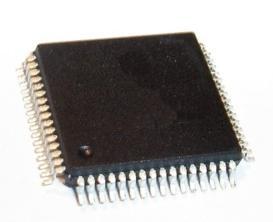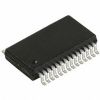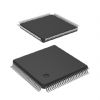Features: • True Dual-Ported memory cells which allow simultaneous reads of the same memory location
• 4K x 8 organization (CY7C138)
• 4K x 9 organization (CY7C139)
• 0.65-micron CMOS for optimum speed/power
• High-speed access: 15 ns
• Low operating power: ICC = 160 mA (max.)
• Fully asynchronous operation
• Automatic power-down
• TTL compatible
• Expandable data bus to 32/36 bits or more using Master/Slave chip select when using more than one device
• On-chip arbitration logic
• Semaphores included to permit software handshaking between ports
• INT flag for port-to-port communication
• Available in 68-pin PLCC Specifications(Above which the useful life may be impaired. For user guidelines, not tested.)
Storage Temperature .............................. .. ..... 65°C to +150°C
Ambient Temperature with
Power Applied........................................... ..... . 55°C to +125°C
Supply Voltage to Ground Potential ............ .. ..0.5V to +7.0V
DC Voltage Applied to Outputs
in High Z State ........................................... ..... 0.5V to +7.0V
DC Input Voltage[5]....................................... ... 0.5V to +7.0V
Output Current into Outputs (LOW)............. ..... 20 mA
Static Discharge Voltage .............................. ..... >2001V
(per MILSTD883, Method 3015)
LatchUp Current ............................................... >200 mA
DescriptionThe CY7C138 and CY7C139 are high-speed CMOS 4K x 8 and 4K x 9 dual-port static RAMs. Various arbitration schemes are included on the CY7C138/9 to handle situations when multiple processors access the same piece of data. Two ports are provided permitting independent, asynchronous access for reads and writes to any location in memory. The CY7C138/9 can be utilized as a standalone 8/9-bit dual-port static RAM or multiple devices can be combined in order to function as a 16/18-bit or wider master/slave dual-port static RAM. An M/S pin is provided for implementing 16/18-bit or wider memory applications without the need for separate master and slave devices or additional discrete logic. Application areas include interprocessor/multiprocessor designs, communications status buffering, and dual-port video/graphics memory.
Each port of CY7C138 and CY7C139 has independent control pins: chip enable (CE), read or write enable (R/W), and output enable (OE). Two flags are provided on each port (BUSY and INT). BUSY signals that the port is trying to access the same location currently being accessed by the other port. The interrupt flag (INT) permits communication between ports or systems by means of a mail box. The semaphores are used to pass a flag, or token, from one port to the other to indicate that a shared resource is in use. The semaphore logic CY7C138 and CY7C139 is comprised of eight shared latches. Only one side can control the latch (semaphore) at any time. Control of a semaphore indicates that a shared resource is in use. An automatic power-down feature is controlled independently on each port by a chip enable (CE) pin or SEM pin.
The CY7C138 and CY7C139 are available in a 68-pin PLCC.

 CY7C138 Data Sheet
CY7C138 Data Sheet







